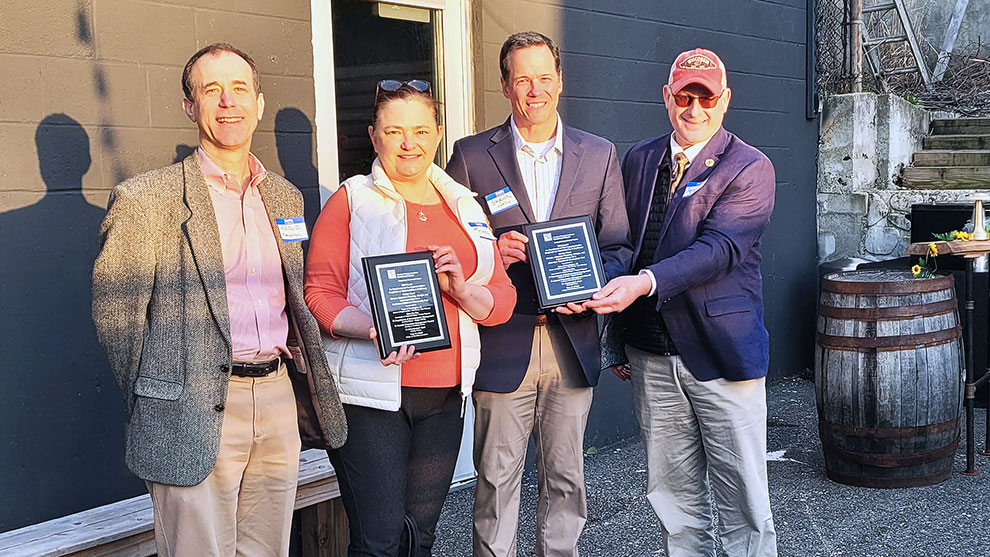Walker Farm Recreation and Resilience Improvement Project
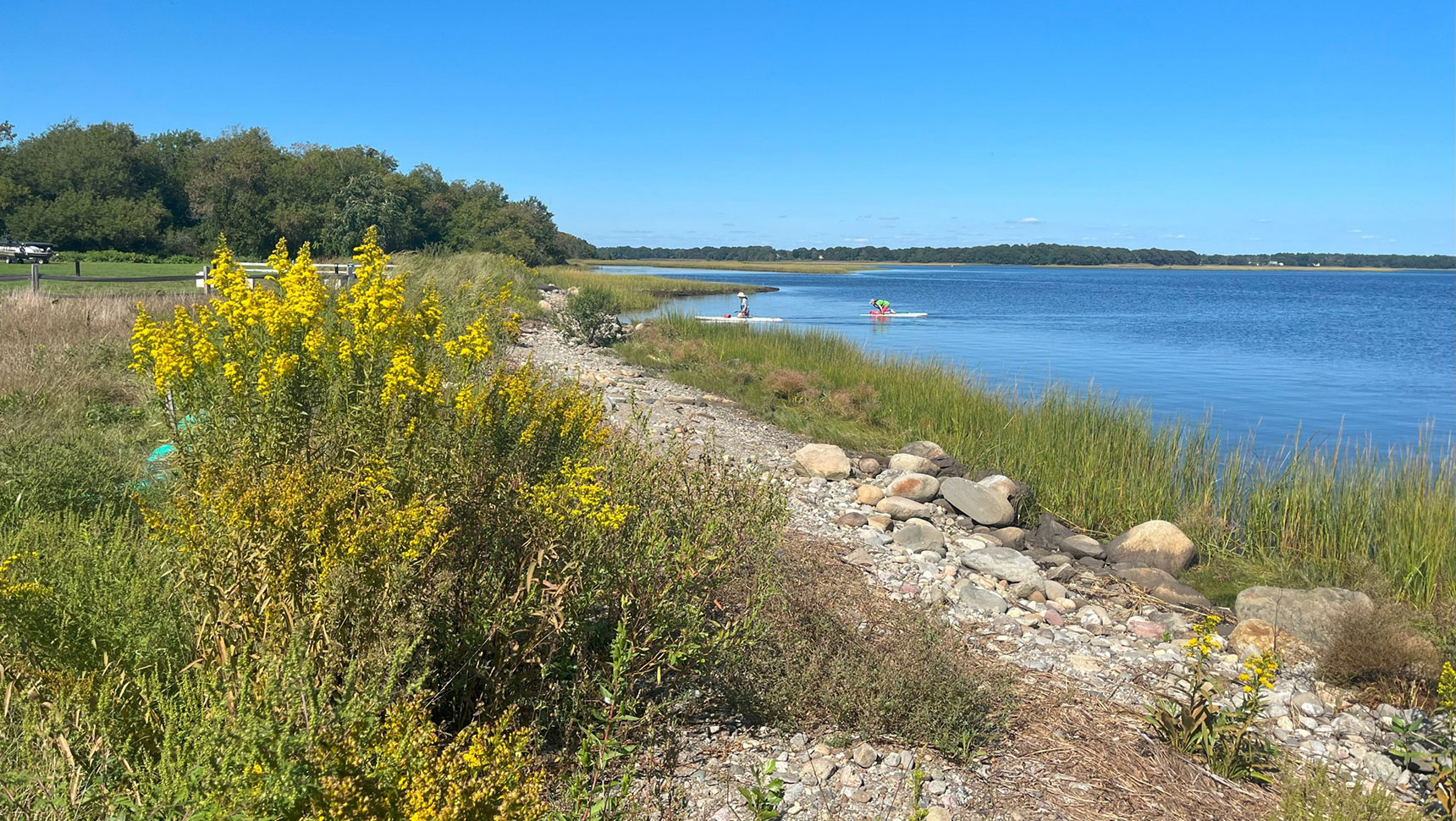

Walker Farm, which is owned by the Town of Barrington, RI, is located at the southern end of Hundred Acre Cove. While an important waterfront access point for community members, it offered only basic recreational facilities, was inaccessible to people with limited mobility, and was being eroded due to the changing climate conditions.
The Town recognized a unique opportunity: They could invest in an idea that would make the space a true community asset – one that achieves form and function at the same time.
The Town hired Fuss & O’Neill to develop the project from concept to construction.
This project created Rhode Island’s first resilient floodable park.
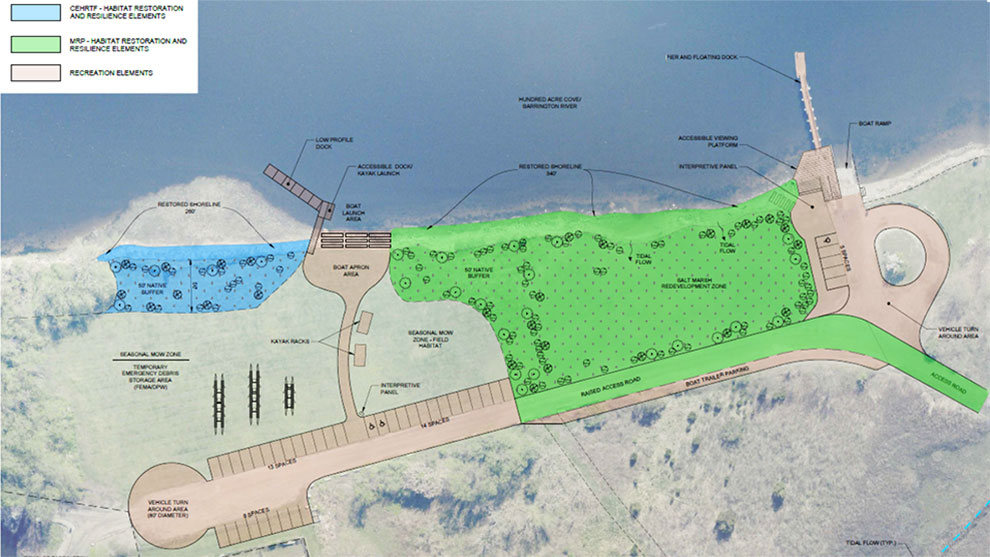
This multifaceted project achieved five objectives:
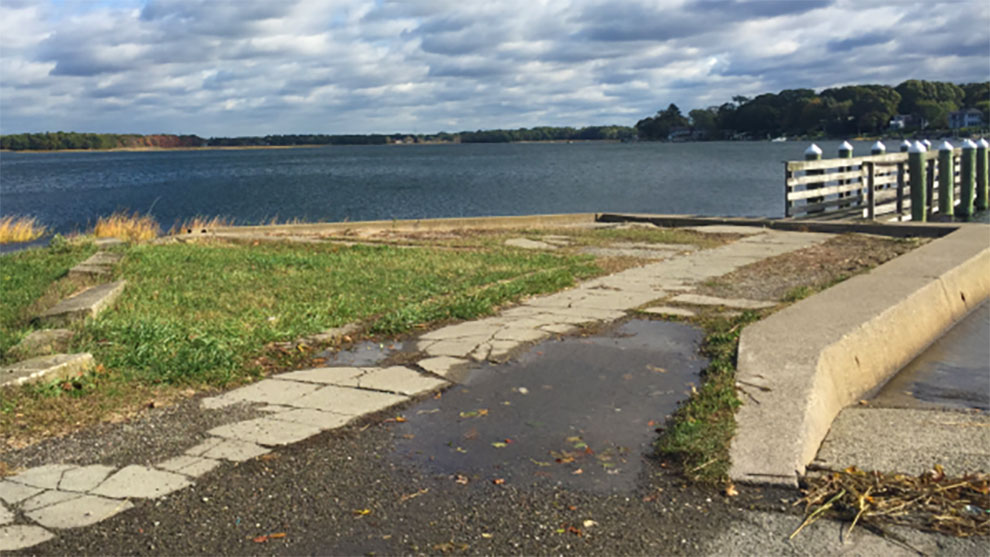
Accessible Viewing Platform – Before
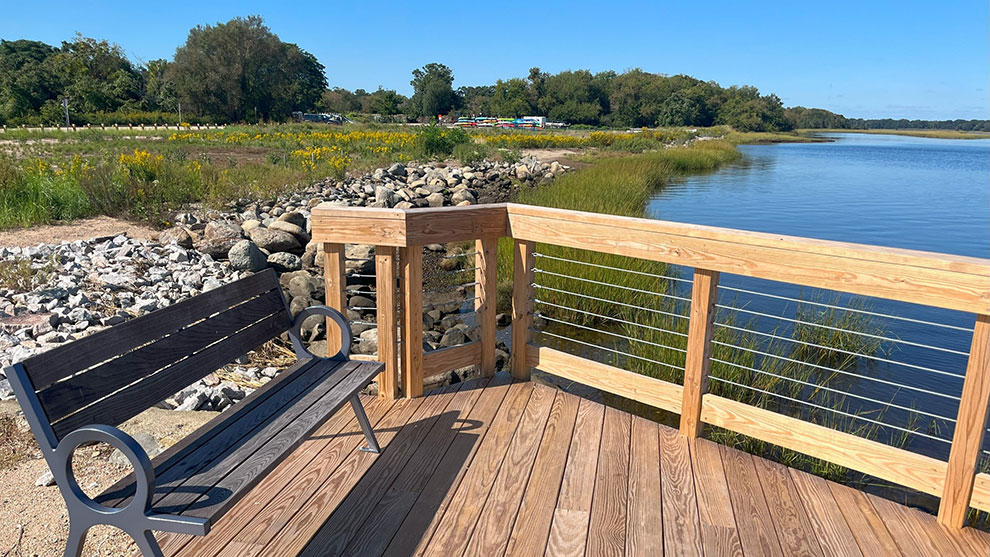
Accessible Viewing Platform – After
The shoreline in the project area was created by previous site owners who dumped asphalt and concrete demolition materials to fill in the existing marsh. This resulted in an uneven, unnatural, and dangerous shoreline for anyone seeking to access the water. Ecologically, it was poor habitat for native flora and fauna and remained barren.
Shoreline reconfiguration and living shoreline restoration required the removal of several hundred tons of dumped asphalt and concrete debris from more than 700 feet of shoreline, followed by careful regrading of the shoreline slope and placement of native boulders, stones, and cobble.
Once the dumped asphalt and concrete debris were removed, the shoreline was carefully reconfigured with the appropriate pitch and materials to accommodate replanting, as well as to accommodate wave action without erosion. At the top of slope, native species were replanted and seeded to hold the sediments and provide habitat for native species.
The area that had been subsiding and flooding with rain events was reconfigured as a functional salt marsh. An opening to allow regular tidal flow in and out was created, the soils were amended with sand, and appropriate salt marsh species were planted in close cooperation with Save the Bay.
The plantings in the restored marsh are thriving, and the threatened salt marsh sparrow have been returning to the project area.
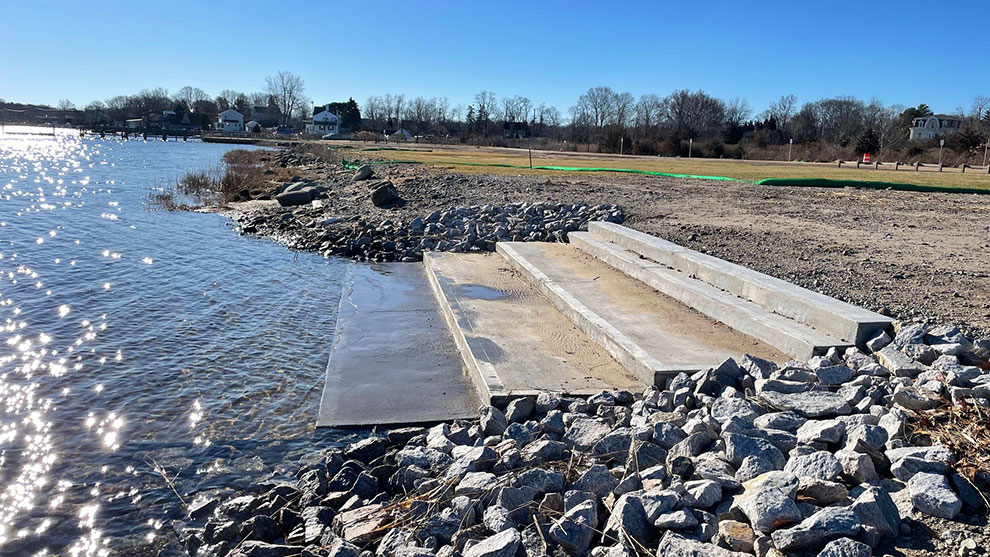
Step-in-Launch Area
This project was a collaborative effort. The State of Rhode Island played a significant role as project partners from permitting to project funding from the RI Infrastructure Bank. The Barrington Public Works Department supported the project from design through construction. Save the Bay (a nonprofit organization dedicated to habitat restoration and adaptation) collaborated with the Town and site design team regarding configuration for shoreline restoration, replanting wetland areas, and buffer habitats. Save the Bay also organized several volunteer-led planting events with students and civic groups to replant the new salt marsh areas and wildlife habitat buffers.
Key stakeholder groups of site users provided valuable insight for the facility rehabilitation design. Kayakers and rowers shared their goals for optimal site design and function. Accessibility advocates informed the design of the fully-accessible viewing platform and its relationship to accessible parking areas and pathways between.
During the development of the design, the Town and community organizations presented at meetings of Barrington’s Resilience and Energy Committee, the Harbor Commission, Planning Board, Recreation Board, Town Council, and the Rhode Island Coastal Resources Management Council. At each of these meetings, project advocates and Town leaders worked together to solicit design recommendations and secured valuable support for the final project design.
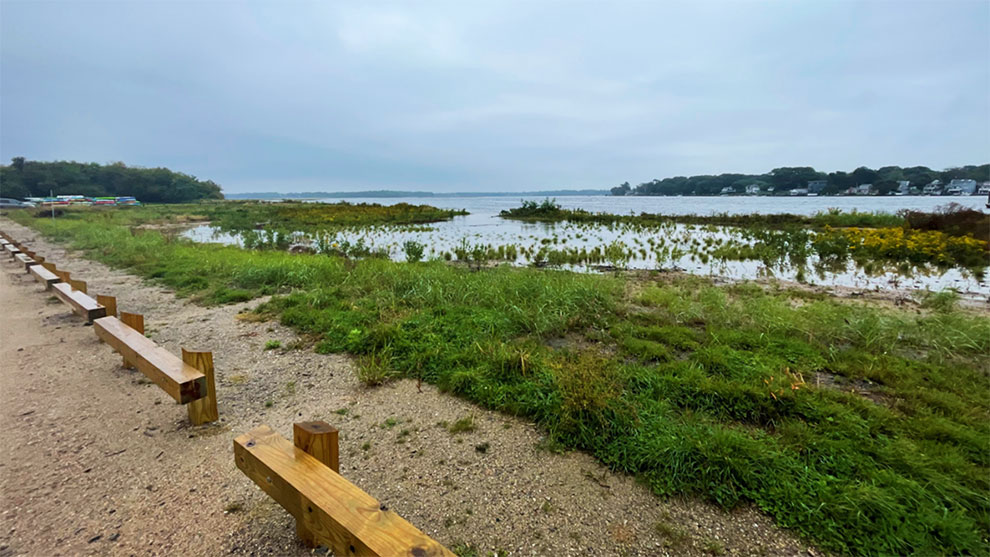
The completed project at Walker Farm has created the state’s first resilient floodable park, vastly improved recreational function, increased public accessibility for all, while restoring native habitats for flora and fauna.
Sustainability and climate resilience were primary design drivers for the project. Project outcomes include: removal of invasive species and dumped debris from the shoreline; restoration of a living shoreline with native species and natural contours; installation of habitat buffers with native species; restoration of functional salt marsh on site to serve as flood storage and habitat; reconfiguration of all site access roads and parking areas to improve resilience to flooding events; improved management of stormwater with pervious paving; and installation of solar-powered and Dark Sky™ compliant site lighting. A large low-lying area in the center of the property has been regraded and converted to functional salt marsh allowing daily flow and provide stormwater storage and filtration ecological services.
A primary goal of the project for participating Town of Barrington departments was to increase the site’s ability to serve the public in both quantity of audiences served and improved experience and safety. During the 2024 season, the Town hosted 80+ kayaks and canoes on the new racks at the paddlecraft launch area. An estimated 25 group trips launched from the site. Over 180 rowers participated in East Bay Rowing’s programs on the site.
